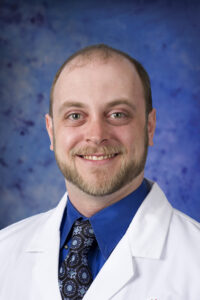The Brain’s Influence on Attraction and Relationships
How would you describe love? Is it a feeling or an emotion? An almost-magical experience? A special chemistry between two people? If you said “chemistry,” you may be on to something. The roller-coaster emotions of being in love actually have a lot to do with brain chemistry — the science of love.
Symptoms of Being in Love
When you fall in love, you may experience some of these “symptoms”:
- Your heart races when you’re with or anticipating being with the person you’re attracted to.
- You get “butterflies” in your stomach.
- Your palms are sweaty; you may get “tongue-tied” and feel awkward.
- You are hyper-aware and energized; you can’t eat or sleep.
- You think about the other person constantly.
As it turns out, these reactions, which are triggered by your attraction to another person, are initiated by the release of specific hormones. The central source of the hormone release is the hypothalamus.

“The hypothalamus is a small but surprisingly complicated part of the brain, given its role in multiple body systems,” says Arthur Moore, MD, Covenant Health neurohospitalist. “Its primary role is in maintaining body equilibrium, or homeostasis, by controlling body salt and water concentrations, as well as growth, temperature, and circadian rhythms. We rarely notice these hypothalamic functions, but sorely miss them if they go wrong.” The hypothalamus also produces hormones that control hunger, mood, heart rate and sex drive.
Love and the Brain: A Chemical Reaction
Before a loving relationship ever develops, the hypothalamus sets the stage during puberty by stimulating the production of estrogen and testosterone, the two hormones that drive the biological desire to reproduce. “While these hormones also increase with finding or identifying a partner, their presence beforehand drives lust more than romantic feelings,” Dr. Moore notes.
When you become attracted to another person and are “falling in love,” the brain triggers an increase in the hormones dopamine and norepinephrine. Dopamine, the “feel-good” hormone, increases levels of happiness and satisfaction as your attraction grows. You have a strong desire to be with your new partner, and you may feel more alive.
At the same time, your serotonin levels drop, and activity in the frontal cortex of the brain decreases. The activity of the amygdala – the fear center of the brain – is also suppressed. These decreases can lead to careless or risk-taking behavior. “That’s why a person in the early stages of a relationship might feel like they could jump out of an airplane for their beloved,” Dr. Moore says.
As the relationship progresses, the inevitable “ups and downs” of life can cause stress and a roller coaster of emotions. Partners begin to have more realistic perceptions of each other’s human imperfections. Jealousy or anger may emerge if one of the partners feels the relationship is threatened.
As love deepens over time, levels of oxytocin – sometimes called “the cuddle hormone” — and vasopressin rise. These hormones are associated with attachment and bonding and are characteristic of deep and relaxed relationships. Oxytocin is not only present in romantic relationships; it also strengthens feelings of attachment between mothers and their newborns, among family members, and within strong friendships and social support groups.
Is Love a Drug?
Both dopamine and oxytocin ignite the pleasure centers of the brain, which “light up” when a perceived reward is received. The same pleasure centers are often linked to addiction. But Dr. Moore explains that intense feelings of love typically decrease as a relationship goes from attraction to bonding and dopamine is replaced by oxytocin. Addiction, on the other hand, represents a compulsion to continually repeat or heighten pleasurable responses.
“In cases of addiction, the body becomes dependent on a substance or chemical to maintain even base levels of dopamine in the system without a corresponding increase in oxytocin. This leads to extreme feelings of sadness or dysphoria whenever the chemical is not present,” Dr. Moore explains. “While you may feel a sense of loss when not near your beloved, it’s not quite the same thing.”
Lovestruck vs. Lovesick
When you’re in love, are you “lovestruck” or “lovesick”? The terms may seem interchangeable, but they have different meanings. “Lovestruck” refers to falling in love quickly, while “lovesick” refers to feeling sad because of unrequited love or the absence of a loved one.
Can Love Hurt?
If a relationship ends in heartbreak, love can hurt – or at least feel miserable. Significant loss can even lead to “broken heart syndrome,” a condition that leads to sudden and significant weakening of the heart. However, Dr. Moore says the syndrome is rare, and “in most cases, the experience simply activates the insular cortex, an area of the brain that feels pain.” While the pain can seem unbearable, over time the experience can contribute to maturity, wisdom, and a better understanding of personal needs and the needs of others in relationships.
Long-Term Effects of Love
So, are all the hormone fluctuations, the roller-coaster emotions and sometimes the heartbreak of love worth it? The science definitely says “yes.”
Research shows that people in long-term loving relationships – whether with romantic partners, family members, or friends – experience health benefits such as longer life, lower blood pressure, less pain, stronger immune systems and heart health, better mental health, even faster healing and better fitness.
“The chemistry of love is complicated, just like relationships,” Dr. Moore says. “However, these relationships are really what makes life worth living.”
And what’s not to love about that?

Covenant Health
Headquartered in Knoxville, Tennessee, Covenant Health is a community-owned, healthcare enterprise committed to providing the right care at the right time and place. Covenant Health is the area’s largest employer and has more than 11,000 compassionate caregivers, expert clinicians, and dedicated employees and volunteers.
